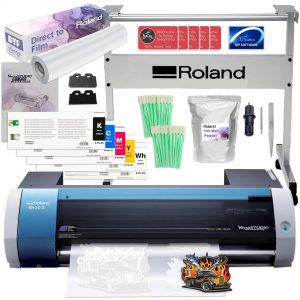DTF Printing Handle Intricate Designs
With its ability to deliver vibrant designs on a variety of fabrics, DTF printing is making waves in the custom apparel industry. It’s a process that offers convenience and reliability, but how does it handle intricate designs and fine details?In D TF printing, digital artwork is printed in reverse onto a PET film using a modified inkjet printer filled with DTF-specific inks. A coating of adhesive powder is then dusted over the printed film. This powder sticks to the wet ink, and when heat-pressed onto fabric, ensures that the design will stay firmly fastened.
The DTF printing process requires specialized equipment to ensure quality and consistency. Investing in the right equipment will help to eliminate issues with color saturation, image registration, and other factors that can affect the final print. Additionally, high-quality DTF printers offer features like RIP (Raster Image Processor) software that goes beyond standard printing tasks and manages the complex aspects of DTF printing.
When designing for dtf printing, it’s important to work with CMYK colors rather than spot colors. This will ensure that the colors you’re using are within the DTF printer’s color gamut and will look their best when transferred to fabric. Additionally, it’s helpful to test and adjust colors in order to achieve the desired vibrancy.

How Does DTF Printing Handle Intricate Designs and Fine Details?
Another consideration is the type of printing powder that will be used in the DTF printing process. Different powders have unique properties that impact their performance. For example, some powders are more coarse than others and provide a more rugged hand feel, while other powders are smoother and have a more refined texture. Choosing the right powder will ultimately impact the finished product and how easy it is to apply to the garment.
Once the digital print is created, it’s then applied to a pre-heated garment with a hot press. DTF printing is not as skill / trade-based as screen printing, and even the most novice print shops can achieve exceptional results with this method. The longevity of a DTF print depends on the substrate, ink, and proper application, and when done correctly, can rival the durability of traditional screen printing.
As the DTF printing revolution continues to grow, print shops can expect continued advancements in printer technology and a higher standard of excellence across the industry. It’s up to the print shop community to continue embracing this revolutionary approach and strive for new levels of quality, consistency, and versatility. With the right DTF printer, the possibilities are endless. For more information, contact your local supplier and ask about their DTF capabilities. They can help you choose the right DTF printer for your business, ensuring exceptional prints and unparalleled customer service.